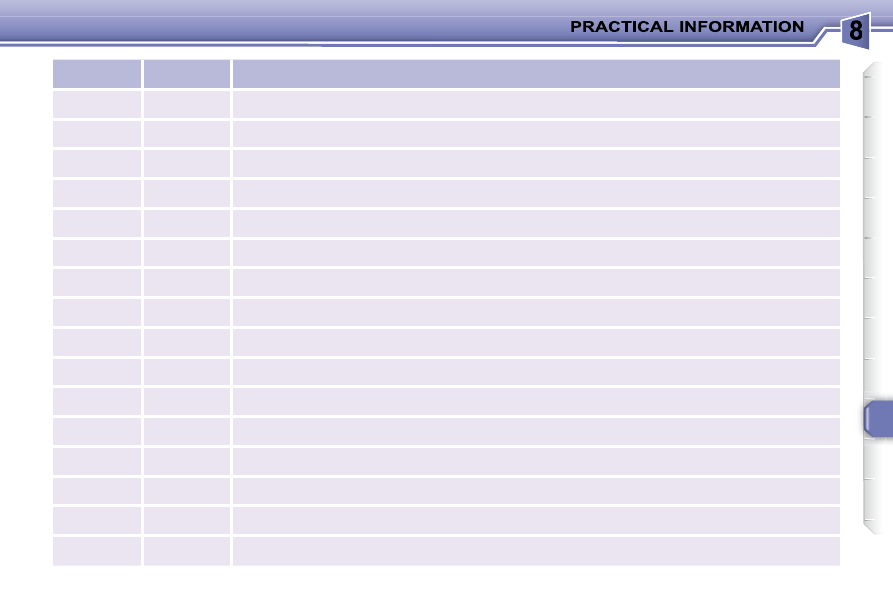Peugeot 206 P Dag (2010.5). Manual - part 7

91
Fuse N°
Rating
Functions
1
-
Not used
4
20 A
Multifunction screen - Boot lamp - Audio system - Steering mounted controls - Trailer
5
-
Not used
6
10 A
Coolant level - Audio system
7
15 A
Driving school accessory - Alarm fi tted as an accessory
9
-
Not used
10
40 A
Rear screen demisting
11
15 A
Rear windscreen wiper
12
30 A
Front electric windows
14
10 A
Engine fusebox - Airbags - Steering mounted controls - Rain sensor
15
15 A
Instrument panel - Multifunction screen - Air conditioning - Audio equipment
16
30 A
Locking/unlocking controls for doors, bonnet and boot
20
10 A
Right-hand brake lamp
21
15 A
Left-hand brake lamp - 3rd brake lamp
22
20 A
Front courtesy lamp - 12 volt accessory socket
S1
Shunt
PARC shunt